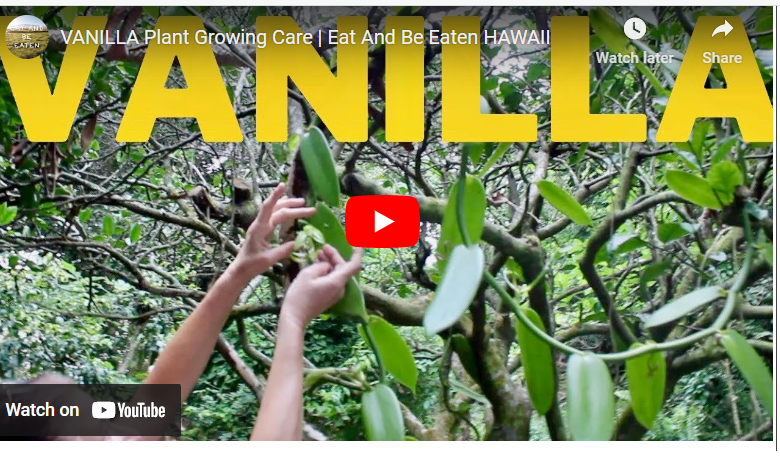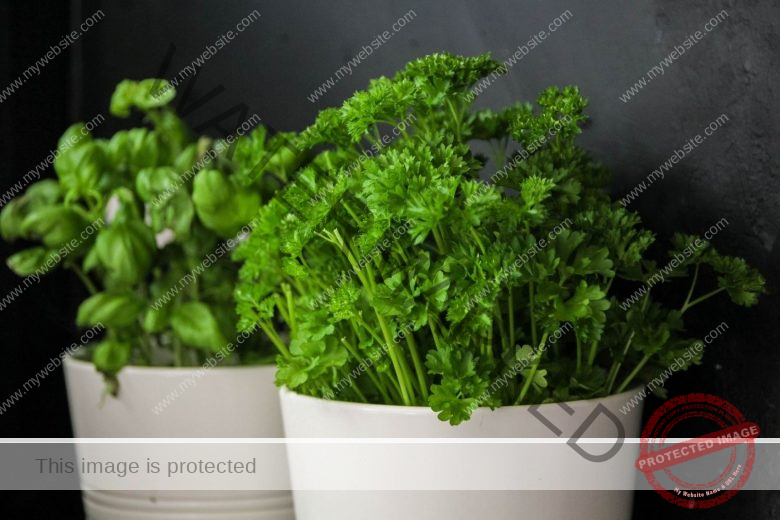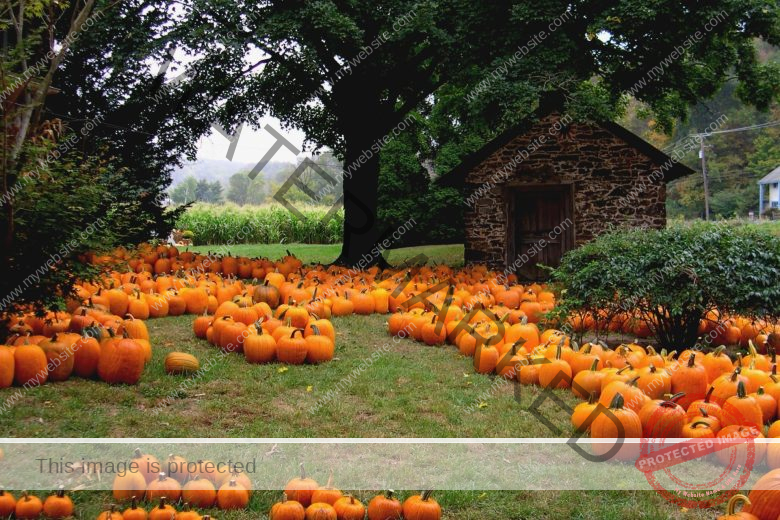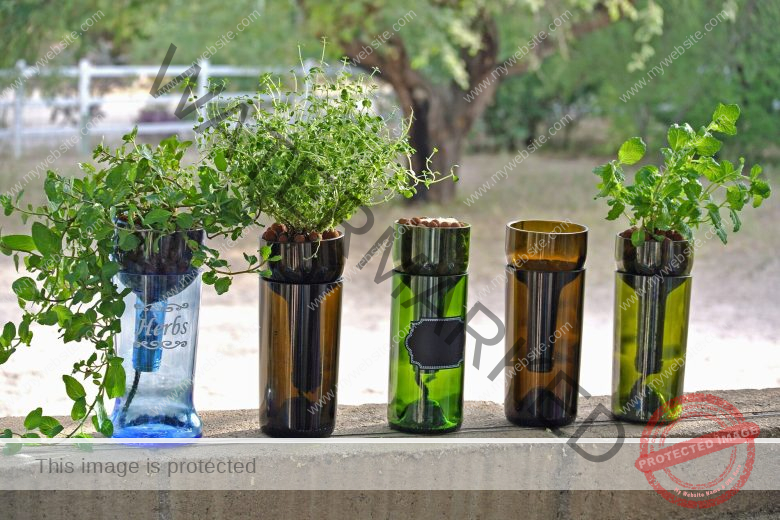Hawaii’s warm and humid climate, coupled with its fertile volcanic soil, makes it an ideal location for growing a variety of crops, including the beloved vanilla bean.
Whether for personal use or commercial purposes, growing vanilla in Hawaii can be a rewarding experience, offering high-quality crops and diverse market opportunities.
However, cultivating this valuable crop in Hawaii can also present unique challenges that require knowledge and skill to overcome.
In this article, we will explore the step-by-step process of growing vanilla in Hawaii, including land preparation, planting, maintenance, harvesting, and processing.
By following these guidelines, you can successfully grow vanilla in Hawaii and potentially turn it into a profitable business.
How To Grow Vanilla In Hawaii
Vanilla is a highly prized spice that is widely used in the food industry, particularly in the production of desserts and baked goods.
Hawaii’s tropical climate and fertile soil make it an ideal location for growing vanilla, a plant that is native to Central America and Mexico.
Read Also: [Beginners Guide] How To Grow Cacao In Hawaii
We have provided you with a step-by-step guide on how to grow vanilla in Hawaii below.
Step 1: Climate and Soil Requirements
Vanilla plants require a warm and humid climate to grow. They prefer temperatures between 65-85°F and humidity levels between 80-95%. In Hawaii, the climate is tropical and humid, making it an ideal location for growing vanilla.
The soil in Hawaii is also well-suited for vanilla cultivation. Vanilla plants require well-draining soil that is rich in organic matter. If your soil is sandy or heavy in clay, you can improve its drainage and fertility by adding compost or other organic matter to the soil.
To prepare the soil for planting vanilla, start by removing any weeds or debris from the area. Then, dig a hole that is at least 2-3 feet deep and wide.
Read Also: [Beginners Guide] How to Grow Spinach in Florida
Mix in compost or other organic matter to improve the soil’s fertility and drainage. Plant the vanilla vine in the hole and backfill with soil, making sure to gently tamp down the soil around the plant.
Step 2: Site Selection
Choose a location that meets the soil and climate requirement. Also, when choosing a location, know that vanilla plants thrive in partial shade, so choose a location that receives some shade during the day. Avoid planting vanilla in full sun, as this can cause the plant to become stressed and reduce its yield.
Step 3: Choosing Vanilla Varieties
There are three main types of vanilla: Bourbon, Tahitian, and Mexican. Bourbon vanilla is the most widely grown variety and is known for its rich and creamy flavor.
Tahitian vanilla has a more floral and fruity flavor, while Mexican vanilla has a spicier and more complex flavor profile.
When choosing a vanilla variety to grow in Hawaii, it’s important to consider the climate and growing conditions.
Read Also: [Beginners Guide] How to Grow Onions in Texas
Bourbon vanilla is the well-suited variety for Hawaii’s tropical climate, but Tahitian and Mexican vanilla can also be grown successfully with the right care and attention.
Step 4: Preparing the Land
Land preparation is crucial when growing vanilla in Hawaii. In order to get the land ready, you will have to:
Step 1: Clear The Area Of Debris
Before planting vanilla, clear the area of any debris, such as rocks, branches, and weeds. This will provide a clean slate for planting and help to prevent any pests or diseases from affecting your plants.
Step 2: Test The Soil
Vanilla plants require well-draining soil that is rich in organic matter. Consider testing your soil to evaluate both its nutrient content and pH level. If your soil is excessively acidic, it is possible to increase its pH by incorporating lime. If your soil is lacking in nutrients, you can add compost or other organic matter to improve its fertility.
Read Also: How to Start Bamboo Farming in Texas [Practical Guide]
Step 3: Improve The Soil
Once you have tested the soil, it’s important to improve its quality by adding compost or other organic matter. This will help to improve soil structure and drainage, as well as provide essential nutrients for your plants.
Step 4: Prepare The Planting Hole
Vanilla plants require a deep planting hole, at least 2-3 feet deep and wide. Dig the hole and mix in compost or other organic matter to improve the soil’s fertility and drainage. Make sure to leave enough space between planting holes to allow the plants to climb and spread.
Step 5: Provide Support
Vanilla plants are climbers and require support to grow. Install trellises or poles to provide support for the vines as they grow.
Read Also: How To Grow Tomatoes In Florida
Step 5: Planting Vanilla
Plant the vanilla vine in the hole and backfill with soil, making sure to gently tamp down the soil around the plant. Make sure to adequately hydrate the plant once it has been planted.
Step 6: Vanilla Plant Care
Vanilla plant care include the following activities:
Frequent Watering
During the first year, it’s important to provide your vanilla plant with regular care and attention. This includes watering the plant regularly.
Fertilizer Application
Fertilize the plant every 2-3 months with a balanced fertilizer that contains equal amounts of nitrogen, phosphorus, and potassium.
Read Also: [Beginners Guide] How To Start Rice Farming In Florida
Plant and Disease Control
Monitor the plant for pests and diseases, and treat as necessary.
Pruning
Pruning is an important aspect of vanilla plant care. Prune the plant regularly to remove dead or damaged leaves, as well as any shoots that are not producing flowers. This will help to promote healthy growth and increase flower production.
Step 7: Harvesting and Processing Vanilla
Vanilla pods are ready for harvest when they are plump and have a slightly yellowish hue. To harvest vanilla in Hawaii, you need to monitor the plants because vanilla pods mature at different times, so it’s important to monitor your plants regularly for signs of maturity. Look for pods that are plump and beginning to turn yellow.
When the pods are mature, it’s time to harvest them. Use a sharp knife or pruning shears to carefully cut the pod from the vine. Be sure to leave a short stem attached to the pod to help with drying and processing.
After harvesting, sort the pods by size and quality. Keep the best pods for selling or using for personal consumption, and set aside any smaller or damaged pods for processing.
Benefits of Growing Vanilla in Hawaii
Hawaii’s climate and soil conditions are well-suited for growing high-quality vanilla.
- Vanilla is a valuable crop that can be sold for a premium price, providing a lucrative income source for farmers.
- Growing vanilla can help to diversify Hawaii’s agricultural industry and reduce dependence on traditional crops.
- Vanilla is a popular flavoring ingredient used in many food products, including ice cream, baked goods, and beverages, providing a potentially large market for vanilla growers.
Challenges of Growing Vanilla in Hawaii:
- Vanilla is a labor-intensive crop that requires careful maintenance and attention to detail.
- Hawaii’s high humidity and frequent rainfall can increase the risk of disease and pest infestations, which can harm the crop.
- Vanilla is a slow-growing crop that can take several years to reach maturity, requiring long-term planning and investment.
- Vanilla requires support structures such as trellises or poles, which can be costly and time-consuming to install.
Factors that Affect Growing Vanilla in Hawaii:
- Climate: Vanilla grows best in warm, tropical climates with consistent temperatures and high humidity.
- Soil: Vanilla requires well-draining soil that is rich in organic matter and nutrients.
- Water: Vanilla requires regular watering to maintain soil moisture levels, but over-watering can cause the roots to rot.
- Shade: Vanilla requires partial shade to protect the plants from direct sunlight and prevent stress.
Is Growing Vanilla Profitable in Hawaii?
Growing vanilla can be profitable in Hawaii, as it is a high-value crop that can be sold for a premium price.
However, the profitability of growing vanilla depends on many factors, including yield, market demand, and production costs.
Vanilla is a slow-growing crop that requires long-term planning and investment, and may take several years to produce a significant harvest.
Marketing and Business Opportunities for Vanilla Produce in Hawaii:
Hawaii’s reputation for producing high-quality vanilla can help to attract buyers and create a strong market for the crop.
Vanilla can be sold to local restaurants, bakeries, and food manufacturers, as well as exported to markets in the mainland United States and abroad.
There may be opportunities for value-added products such as vanilla extract, which can be made from the pods and sold for a higher price.
The unique flavor profile of Hawaii-grown vanilla can help to differentiate it from other vanilla products on the market, creating a niche market for the crop.
Varieties of Vanilla in Hawaii
Hawaii is known for producing high-quality vanilla beans of the Bourbon variety, which have a sweet, creamy flavor with notes of caramel and cherry.
How much is Vanilla sold in Hawaii
Vanilla is a high-value crop in Hawaii, and prices can vary depending on the quality and availability.
In Hawaii, vanilla can be sold for up to $600 per pound.
Best Agronomic Practices to engage in growing Vanilla in Hawaii
Vanilla grows best in a warm, humid climate with well-drained soil and filtered shade.
The best agronomic practices to engage in growing vanilla in Hawaii include selecting healthy planting materials, providing adequate shade, irrigation and fertilization, training and pruning the vines, and controlling pests and diseases.
Other recommended practices include regular weeding, mulching, and ensuring good ventilation in the plantation.
Projected profit of Vanilla in Hawaii
The projected profit of vanilla in Hawaii can vary depending on several factors such as the quality of the beans, yield per acre, and market demand.
With proper management practices, a farmer can earn a profit of up to $60,000 per acre of vanilla plantation.
Common Diseases and Pests of Vanilla
The common diseases and pests of vanilla include stem and root rot, leaf spot, thrips, mites, and nematodes.
Stem and root rot can be treated by avoiding overwatering, improving drainage, and using fungicides.
Leaf spot can be controlled by maintaining good hygiene, pruning infected parts, and using fungicides.
Thrips and mites can be managed by using insecticides and natural predators such as predatory mites.
Nematodes can be controlled by using nematicides and avoiding planting vanilla on infested soil.
Different Propagation Method of Vanilla
The most common propagation method for vanilla is stem cutting.
Other propagation methods include tissue culture and seed germination, although they are less commonly used.
Does Vanilla Grow in Hawaii?
Yes, vanilla can grow in Hawaii. Hawaii’s warm and humid climate, along with its fertile volcanic soil, make it an ideal location for growing vanilla.
However, growing vanilla in Hawaii can be challenging due to the state’s high humidity and frequent rainfall, which can increase the risk of disease and pest infestations.
Can You Grow Vanilla Beans in Hawaii?
Yes, you can grow vanilla beans in Hawaii. However, growing vanilla beans can be a complex and time-consuming process that requires careful attention to detail.
Vanilla beans require partial shade, regular watering, and a trellis or pole system for support. It can take several years for vanilla plants to reach maturity and produce a significant harvest, so growing vanilla beans requires patience and long-term planning.
Where Do They Grow Coffee in Hawaii?
Coffee is grown in several regions of Hawaii, including the Kona region on the Big Island, Maui, and the Waialua region on Oahu.
The Kona region is known for producing high-quality coffee beans due to its ideal growing conditions, including rich volcanic soil, ample rainfall, and sunny days with cool nights.
Hawaii’s coffee industry is highly regulated to ensure that the beans are of the highest quality and meet strict production standards.
How to Grow Vanilla Beans at Home
Growing vanilla beans at home can be a rewarding experience, but it requires careful planning and attention to detail. Here are some steps to help you grow vanilla beans at home:
- Choose a location with partial shade and well-draining soil.
- Install a trellis or pole system for support, as vanilla beans grow as vines.
- Plant vanilla cuttings or seeds in a mixture of potting soil and compost.
- Water the plants regularly, but avoid over-watering as this can cause the roots to rot.
- Fertilize the plants with a balanced fertilizer every three months.
- Train the vines to grow along the trellis or poles.
- Hand-pollinate the flowers to encourage fruit development.
- Harvest the beans when they turn yellow and become plump.
- Cure the beans by blanching them in hot water, wrapping them in a towel, and allowing them to air dry for several months.
Conclusion
While growing vanilla in Hawaii can present unique challenges, it can also offer significant benefits such as high-quality crops and diverse market opportunities. With the right knowledge and techniques, growers in Hawaii can successfully cultivate vanilla beans and potentially turn it into a profitable business.
Whether growing vanilla for personal use or commercial purposes, Hawaii’s ideal growing conditions make it a promising location for this beloved and valuable crop.





